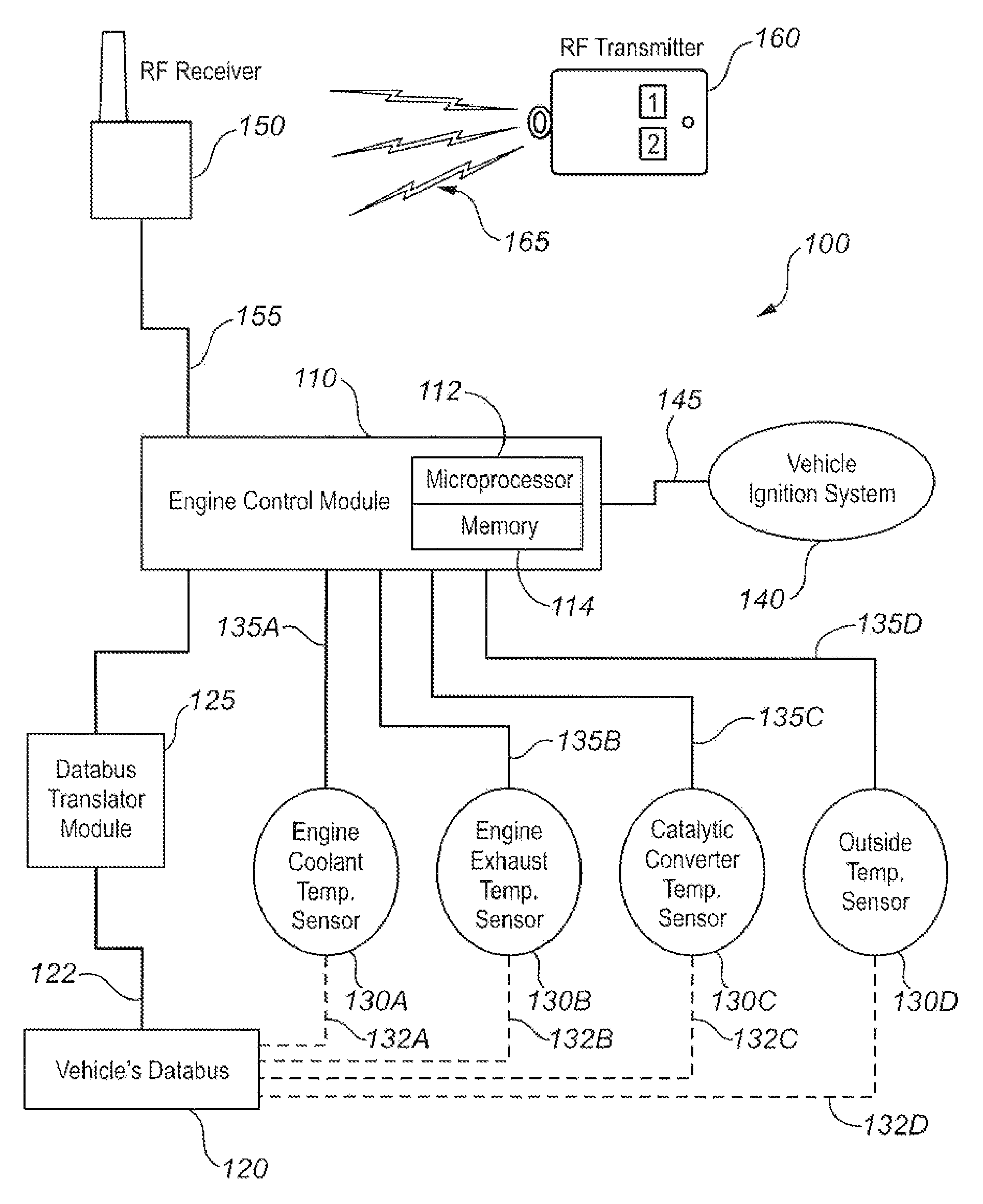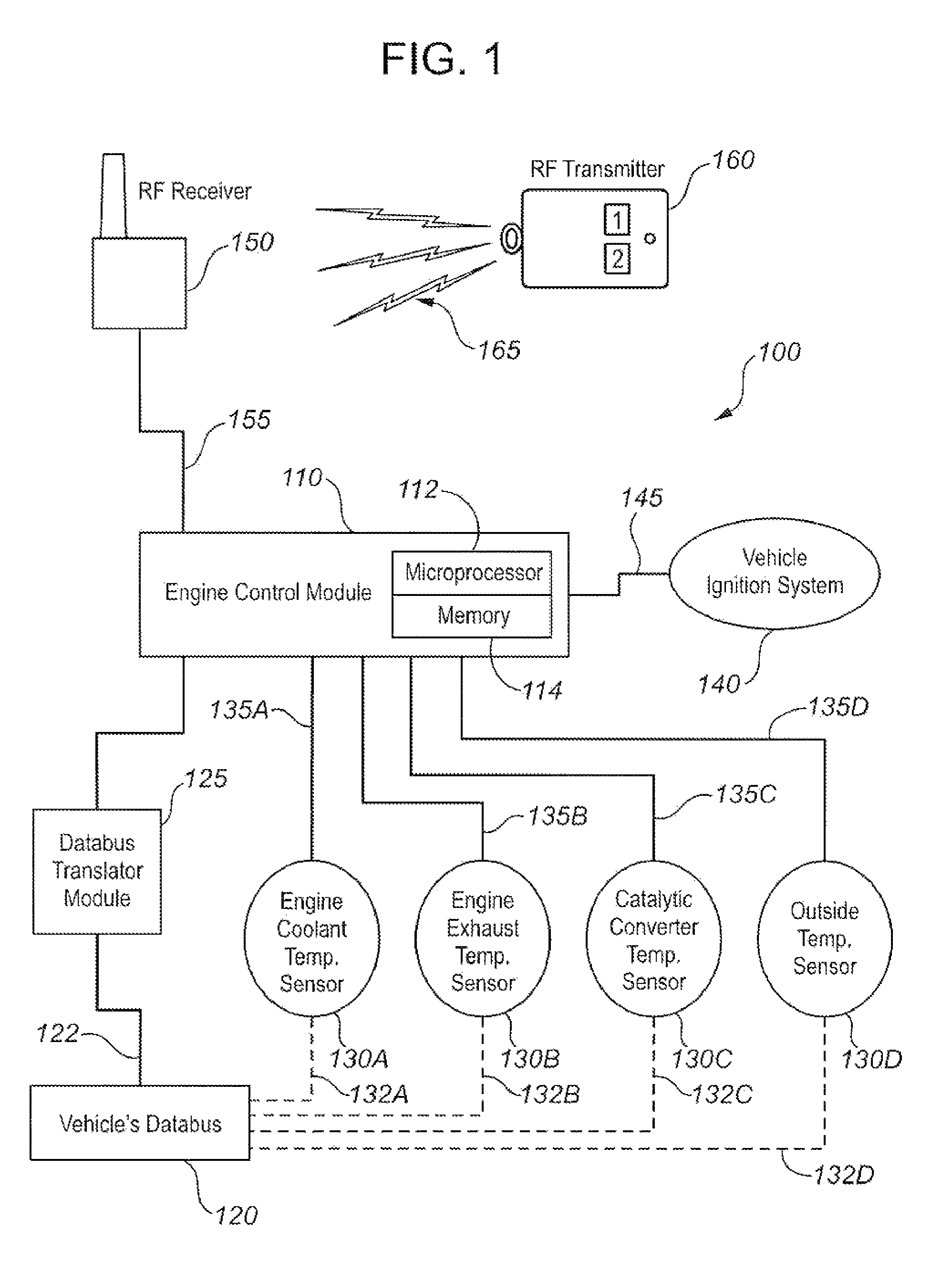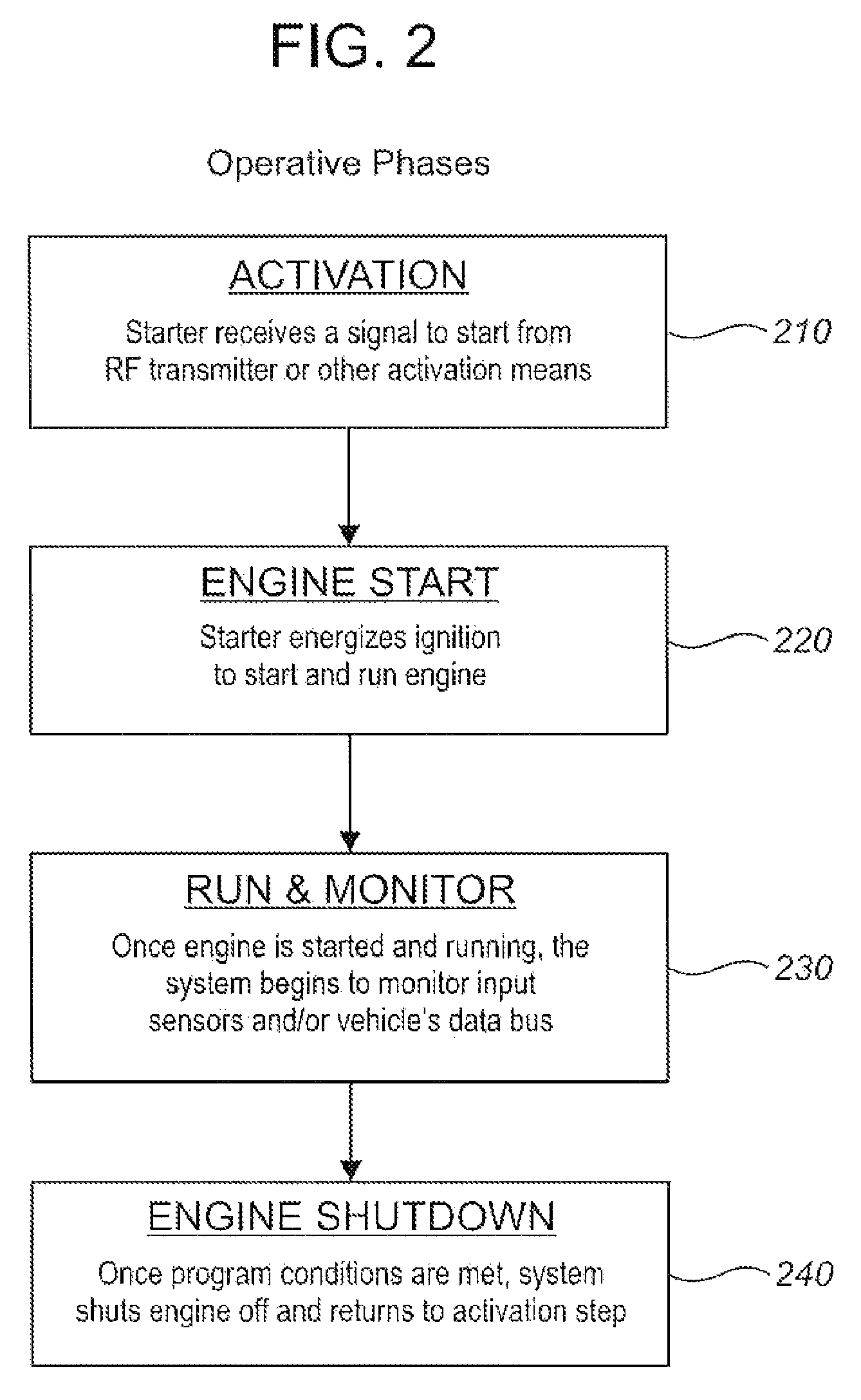Method and system for regulating emissions from idling motor vehicles
a technology for regulating and reducing exhaust emissions, which is applied in the direction of charge feed systems, electrical control, carburettors, etc., to achieve the effect of reducing fuel wastage and greenhouse gas emissions
- Summary
- Abstract
- Description
- Claims
- Application Information
AI Technical Summary
Benefits of technology
Problems solved by technology
Method used
Image
Examples
first embodiment
[0027]FIG. 1 schematically illustrates the components of an engine regulation system 100 for regulating motor vehicle exhaust emissions in accordance with the present invention. System 100 comprises engine control module 110 incorporating a microprocessor 112 and a microprocessor memory 114. Control module 110 is in direct electronic communication with one or more sensors 130A, 130B, 130C (and so on), via corresponding sensor data links 135A, 135B, 135C (and so on). Alternatively, control module 110 may be in electronic communication with sensors 135A, 135B, 135C (and so on) via a data bus 120, with which the sensors communicate which via corresponding sensor data links 132A, 132B, 132C (and so on). Sensor data links could be wired or wireless links. Data bus 120 is in communication with control module 110 via a communication link 122 (possibly but not necessarily in association with a data bus translator module 125 as shown in FIG. 1).
[0028]The particular embodiment of system 100 i...
second embodiment
[0031]FIG. 2 is a flow chart schematically illustrating the operative phases of an engine regulation system 100 in accordance the present invention. In the “Activation” phase 210, control module 110 receives a signal from RF transmitter 160 (or other activation means) to initiate start-up of the vehicle's engine. In the “Engine Start” phase 220, control module 110 engages ignition system 140 to start the motor. In the “Run & Monitor” phase 230, which begins as soon as the engine is running, control module 110 monitors “active inputs” from sensors 130A, 130B, etc., and compares these inputs against benchmark values stored in memory 114. Once all monitored active inputs have reached their corresponding benchmark values, microprocessor 112 generates an engine shutdown signal which control module 110 transmits to ignition system 140, which is thereby deactivated and the engine is shut down.
[0032]Engine regulation systems and methods in accordance with the present invention may be adapte...
PUM
 Login to View More
Login to View More Abstract
Description
Claims
Application Information
 Login to View More
Login to View More - R&D
- Intellectual Property
- Life Sciences
- Materials
- Tech Scout
- Unparalleled Data Quality
- Higher Quality Content
- 60% Fewer Hallucinations
Browse by: Latest US Patents, China's latest patents, Technical Efficacy Thesaurus, Application Domain, Technology Topic, Popular Technical Reports.
© 2025 PatSnap. All rights reserved.Legal|Privacy policy|Modern Slavery Act Transparency Statement|Sitemap|About US| Contact US: help@patsnap.com



